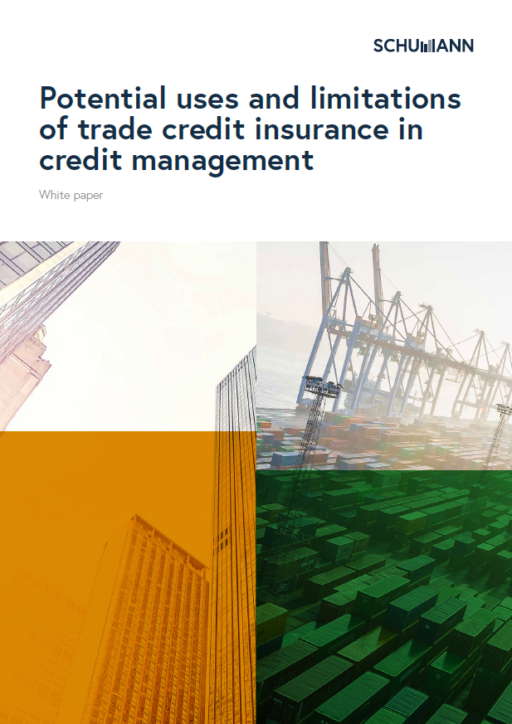Announced limit reductions and deletions
In 2019 the commercial credit insurance companies in Germany insured receivables with a total cover of € 422 billion. But recently there have been announcements that limits will be reduced or completely cancelled. Does credit insurance still fulfil its purpose?
Firstly, it should be pointed out that the insurance companies in the area of commercial credit insurance have received total government guarantees worth € 30 billion to enable them to continue to make generous coverage agreements. This is counterbalanced, however, by the fact that 65 % of the income from premiums this year has to be handed to the government.
Because of the suspension of the obligation to register insolvency - one could say state-supported delaying of filing for bankruptcy - from October onward we will start to see an increase in insolvencies that had previously been delayed.
The purpose of trade credit insurance
In order to evaluate further developments, it is necessary to keep in mind the tasks of commercial credit insurance:
- Apart from the policy excess, it takes over the credit risk.
- With protected default, the insurance pays out before insolvency is declared, e.g. after 120 or 150 days.
- The credit insurance company takes over the creditworthiness checking process.
Up to now, most of the credit insurance companies have allocated reasonable credit limits. It is not surprising that limit reductions have taken place in an international context. The danger of insolvency is increasing internationally.
There are, however, credit insurance companies who are repeating contract cancellation activities in specific sectors of the economy just as they did during the financial crisis and thus discrediting the whole industry. They have probably calculated that it is more profitable to cancel limits and contracts than to take advantage of the state guarantee, thereby losing premium volume. These insurers would prefer to make contracts with customers whose biggest risks are with companies that are able to obtain liquidity on the bond markets through the ECB. But not everybody behaves this radically.
Risk reduction is reasonable and necessary in certain cases
Overall, it makes sense that risk is gradually being reduced in particular industries and regions - wherever companies are getting into problems. From the point of view of the companies taking out credit insurance this is certainly unpleasant at first glance – turnover which, apart from the policy excess, was covered by the credit insurance appears to be lost. But the first question that presents itself is whether the margin on such contracts is higher than the policy excess – if not, there is a negative effect, also for the insured company. Now one could ask whether the loss in turnover due to the cancellation of limits costs more than the costs generated by the policy excess.
In the longer term every credit insurance company will reject companies with insufficient liquidity. What many credit insurance companies are certainly doing differently than during the financial crisis, during which credit lines for whole industries were simply reduce or cancelled, is that this is being done in a significantly more differentiated way. The state guarantee is also helping in two ways. On the one hand, higher risks can be taken onto the books – partly covered by the government guarantee – without which some of these risks would already have been cancelled. On the other hand, it is possible to stay in risks a little longer when deteriorations occur, before the credit insurance company cancels. This is also a different situation.
Finally, from the point of view of the credit insurance company we should also observe that the 35% of the insurance premium that remains with the industry primarily needs to be used to cover the administrative costs and to cushion the effect of losses in which the amount of the default exceeds the agreed guarantee. The necessary tactic here is to get as close to these limits as possible step-by-step; not so easy, as we do not really have any previous experience of a crisis like the current one on which to base our actions.
Summarized:
- Many risks would no longer be supplied without credit insurance.
- Without protected default, customers would have to wait longer for their money and possibly get into liquidity problems themselves.
- Of course, the annoyance of commercial credit insurance customers when risks are cancelled is understandable, especially when these activities are performed across-the-board. However, one needs to look very carefully and critically question whether it would really make sense to supply the cancelled risk. Finally, the suspension of the obligation to register insolvency does not make the situation any easier.
White paper: Limits and potentials of trade credit insurance in credit management

